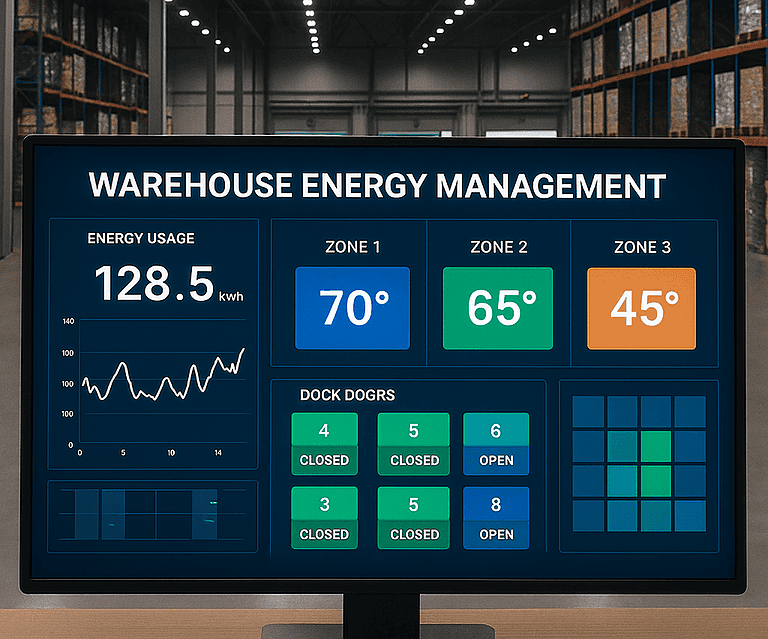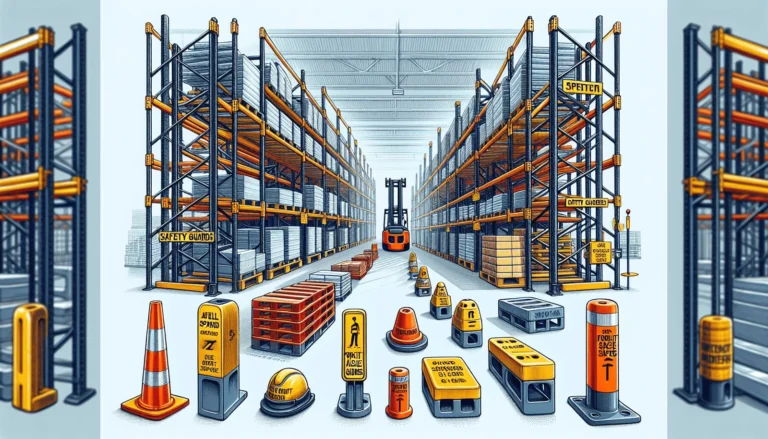Warehouse KPIs That Matter in 2025 – A Practical Guide for Managers
Warehousing in 2025 isn’t just about moving pallets—it’s about measuring results. Every KPI for warehouse operations tells you where efficiency is thriving and where you’re losing time, money, or accuracy. Whether you oversee a fulfillment center or a regional DC, tracking the right KPIs ensures your operation runs with precision.

Why KPI for Warehouse Operations Matters
A KPI for warehouse performance is more than a number—it’s a decision-making tool. The right KPIs reveal bottlenecks, highlight cost savings, and help managers balance speed with accuracy. Without them, warehouses risk incurring higher costs, experiencing late orders, and facing customer dissatisfaction.
Core Warehouse KPIs in 2025
Order Picking Accuracy
Target: 99.9%
Errors in picking cause delays and returns. Voice-picking and barcode scanning keep mistakes below 0.1%.
Inventory Accuracy
Target: 97%+
Cycle counting and RFID reduce stock discrepancies and prevent costly overstock or shortages.
Dock-to-Stock Cycle Time
Target: <8 hours
This KPI measures inbound efficiency. The faster goods move to storage, the quicker they can ship.
Order Cycle Time
Target: Same-day or next-day
Measures time from order placement to shipment—critical for e-commerce fulfillment.
Space Utilization
Target: 80–85%
Slotting, mezzanines, and vertical racking optimize square footage and reduce wasted space.
Labor Productivity (Units/Hour)
Target: Industry-specific
Tracks throughput per worker. Automation (AMRs, WES) is key to improvement.
Carrying Cost of Inventory
Target: <25% of inventory value
Storage, depreciation, and insurance add up. JIT and demand forecasting reduce this burden.
Return Rate Due to Fulfillment Error
Target: <1%
Tracks preventable returns caused by picking or shipping errors.

Navigating Inventory KPIs
Accuracy Rate
Aligning physical stock with system records is vital for order fulfillment. Cycle counting ensures accuracy.
Inventory Turnover
High turnover indicates healthy demand and efficient replenishment. Low turnover ties up cash flow.
Carrying Costs
Measure the percentage of inventory value spent on storage, handling, and insurance. High costs often point to overstocking.
Order Fulfillment KPIs
Order Cycle Time
Shorter cycle times = happier customers. Lean processes and WMS integration reduce delays.
Perfect Order Rate
A “perfect order” is on time, accurate, and undamaged. This KPI reflects customer satisfaction.
Backorder Rate
Shows how often demand exceeds available inventory. High backorder rates signal poor planning.

Picking Process KPIs
Picking Accuracy
High picking accuracy reduces returns and increases customer trust.
Picking Productivity
Units picked per labor hour highlight efficiency. AMRs and pick-to-light systems drive improvements.
Space and Resource Utilization KPIs
Space Utilization
Maximizing cubic space ensures better ROI on warehouse real estate.
Labor Cost Analysis
Tracks cost per order for labor. Identifies staffing inefficiencies and opportunities for automation.
WMS and KPI Dashboards
Modern WMS platforms create real-time KPI for warehouse dashboards, consolidating picking, inventory, and labor data into one view. These dashboards act as a “command center” for continuous improvement.

Safety and Compliance KPIs
Safety Metrics: Monitor near misses, accidents, and compliance audits.
Training Effectiveness: Ensures staff are trained to handle tasks safely and efficiently.
Cost Management KPIs
Transportation Costs: Optimize loads and routes to reduce per-shipment expenses.
Shrinkage: Tracks inventory loss through theft, misplacement, or damage.
Customer-Focused KPIs
On-Time Delivery Rate: A leading indicator of customer satisfaction and loyalty.

Conclusion
The right KPI for warehouse operations serves as a compass, guiding managers toward efficiency, accuracy, and profitability. By focusing on metrics such as order accuracy, space utilization, and cycle time, warehouses in 2025 can enhance performance, lower costs, and deliver a better customer experience.
Additional Resources
FAQ
What is KPI for warehouse operations?
It’s a measurable performance indicator such as inventory accuracy, order cycle time, or labor productivity.
Which warehouse KPI improves customer satisfaction?
A perfect order rate and on-time delivery rates directly impact customer loyalty.
How can I reduce warehouse carrying costs?
Implement JIT, improve forecasting, and eliminate excess stock to reduce carrying costs.
Why is inventory turnover important?
It measures how quickly stock is sold and replenished, impacting cash flow and storage costs.





